Traditional Chinese Medicine 中医 (TCM) is a holistic healing system that has been practiced for over 2,500 years. Rooted in ancient Chinese philosophy, TCM views the body as an interconnected system where balance and harmony are essential for health. Unlike Western medicine, which often focuses on treating symptoms, TCM aims to address the root causes of illness by restoring balance within the body. This guide will introduce you to the foundational principles of TCM, including Yin-Yang theory, the Five Elements, Qi, and Meridians.
The Foundations of TCM
TCM is built on several core concepts that explain how the body functions and how illness arises. These principles form the basis for diagnosis, treatment, and prevention in TCM.
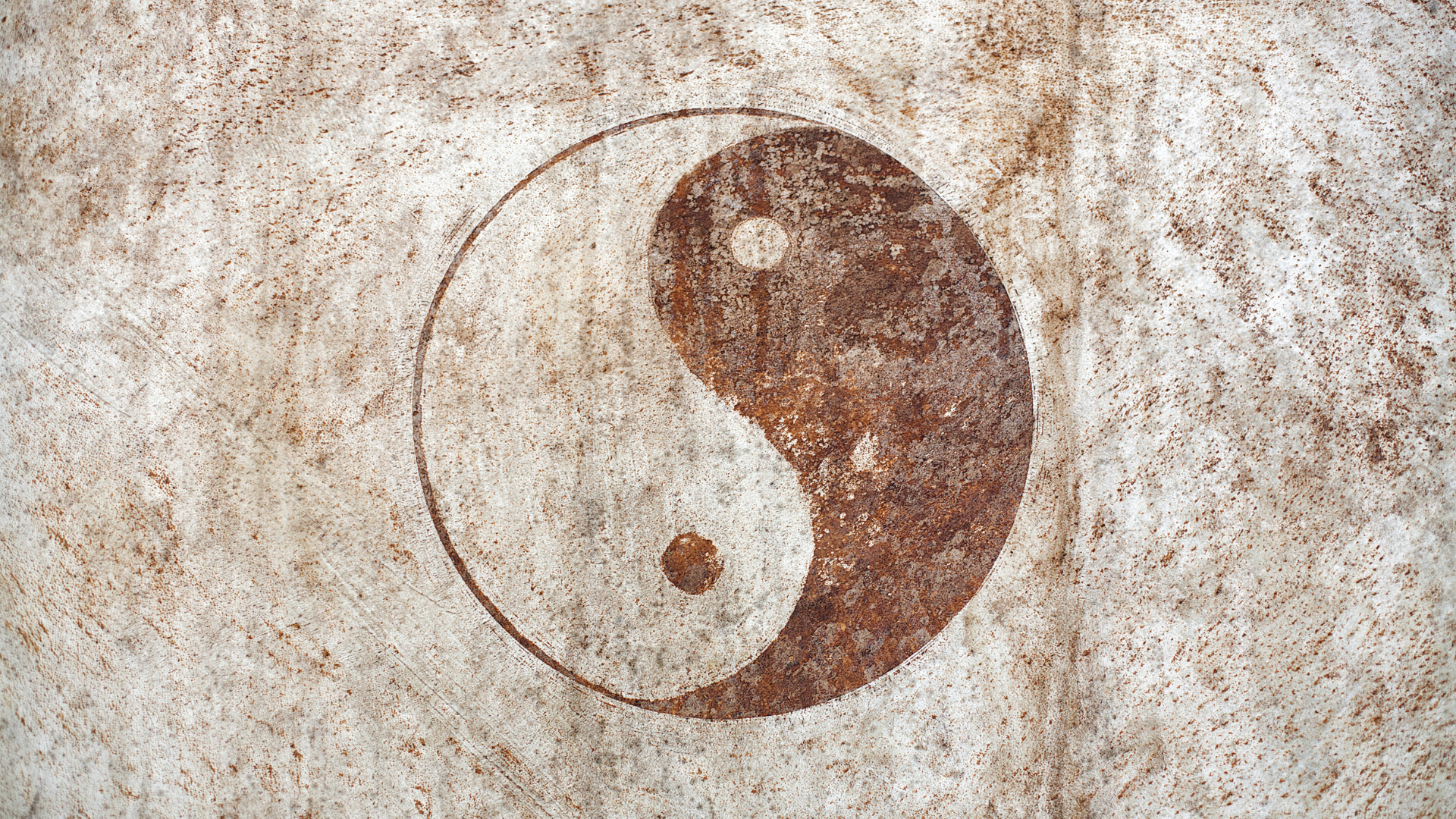
1. Yin-Yang Theory
The concept of Yin and Yang (阴阳) is central to TCM. It represents the idea that opposite forces are interconnected and interdependent, creating a dynamic balance in the universe and within the body.
- Yin: Associated with coolness, darkness, rest, and inward energy. Examples include the moon, night, and the internal organs.
- Yang: Associated with warmth, light, activity, and outward energy. Examples include the sun, day, and the body’s surface.
Key Principles:
- Balance: Health is achieved when Yin and Yang are in harmony.
- Interdependence: Yin and Yang cannot exist without each other.
- Transformation: Excess Yin can transform into Yang, and vice versa.
In TCM Practice:
- Illness is often seen as an imbalance between Yin and Yang. For example, a fever (excess Yang) might be treated with cooling herbs (Yin), while cold hands and feet (excess Yin) might be treated with warming therapies (Yang).
2. The Five Elements (Wu Xing)
The Five Elements (五行)—Wood (木), Fire (火), Earth (土), Metal (金), and Water (水)—are another foundational concept in TCM. These elements represent different phases of energy and are used to explain the relationships between the body’s organs, emotions, and natural phenomena.
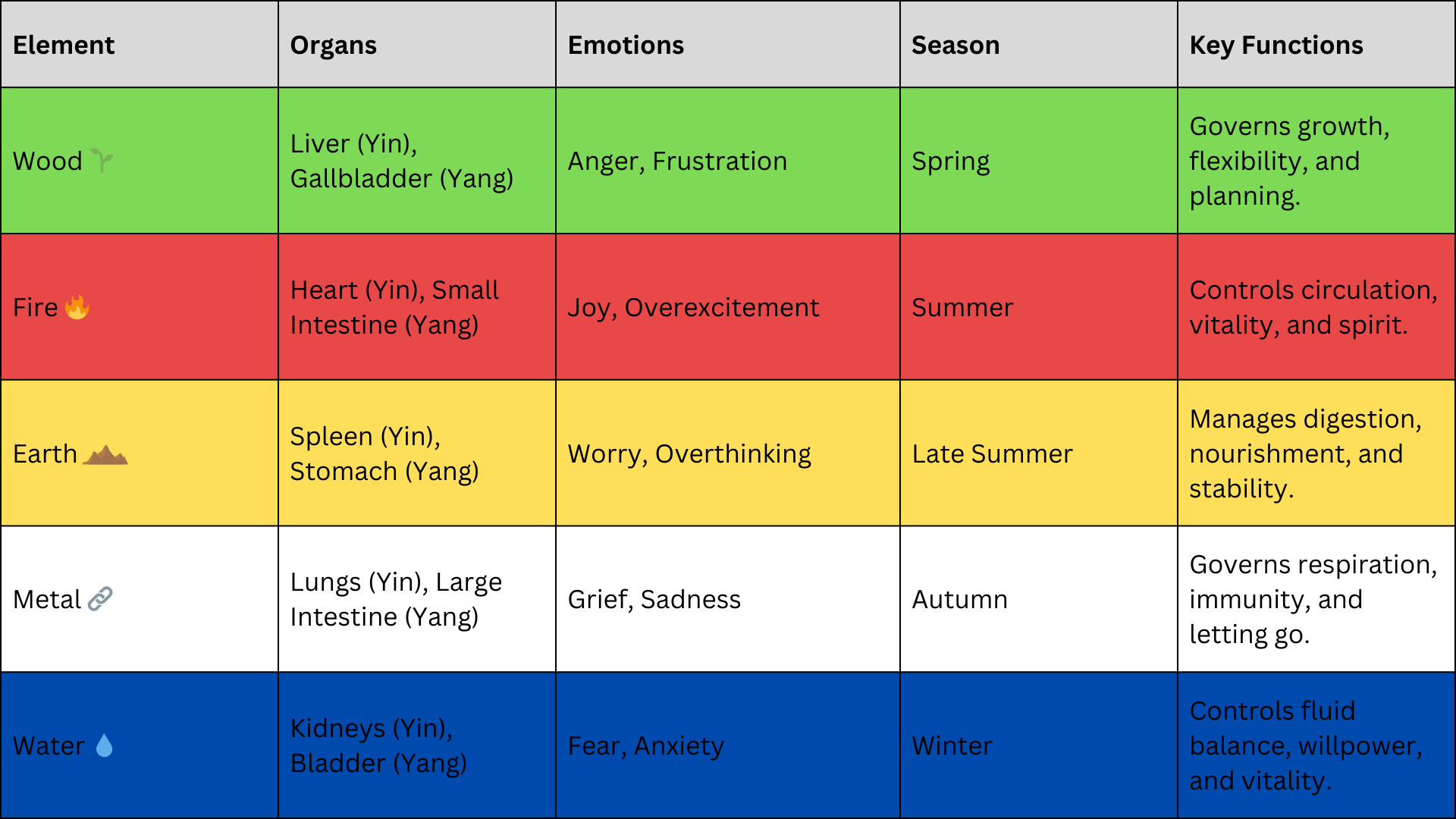
Key Principles:
- Cycles: The elements interact through cycles of generation(生 Sheng)(e.g. Wood generates Fire) and control (克Ke)(e.g., Water controls Fire).
- Balance: Health depends on the harmonious interaction of the elements.
In TCM Practice:
- Practitioners use the Five Elements to diagnose imbalances and guide treatments. For example, a person with liver issues (Wood element) might also experience anger or eye problems, as these are linked to the Wood element.
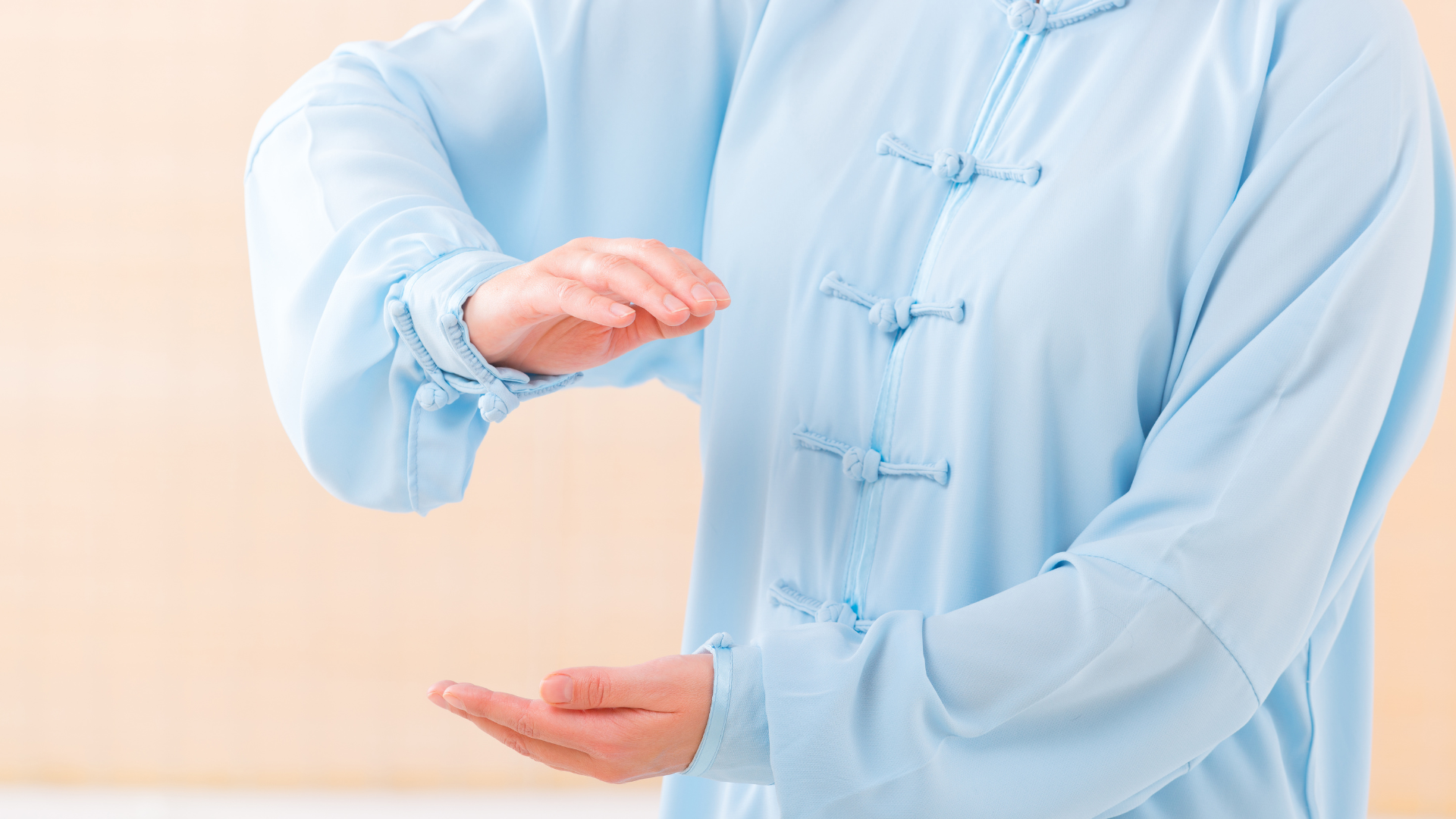
3. Qi (Vital Energy)
Qi 气 (pronounced “chee”) is the vital energy that flows through the body, sustaining life and maintaining health. It is the foundation of all physiological functions and is influenced by factors like diet, exercise, emotions, and environment.
Key Principles:
- Flow: Qi flows through the body along pathways called meridians.
- Balance: Health depends on the smooth and balanced flow of Qi.
- Types of Qi: There are different types of Qi, including:
- Yuan Qi 原气 (Original Qi): Inherited from parents, it governs growth and development.
- Zhong Qi 中气 (Gathering Qi): Supports the heart and lungs.
- Wei Qi 卫气 (Defensive Qi): Protects the body from external pathogens.
In TCM Practice:
- Blocked or deficient Qi can lead to illness. Treatments like acupuncture, herbal medicine, and Qigong aim to regulate and strengthen Qi.
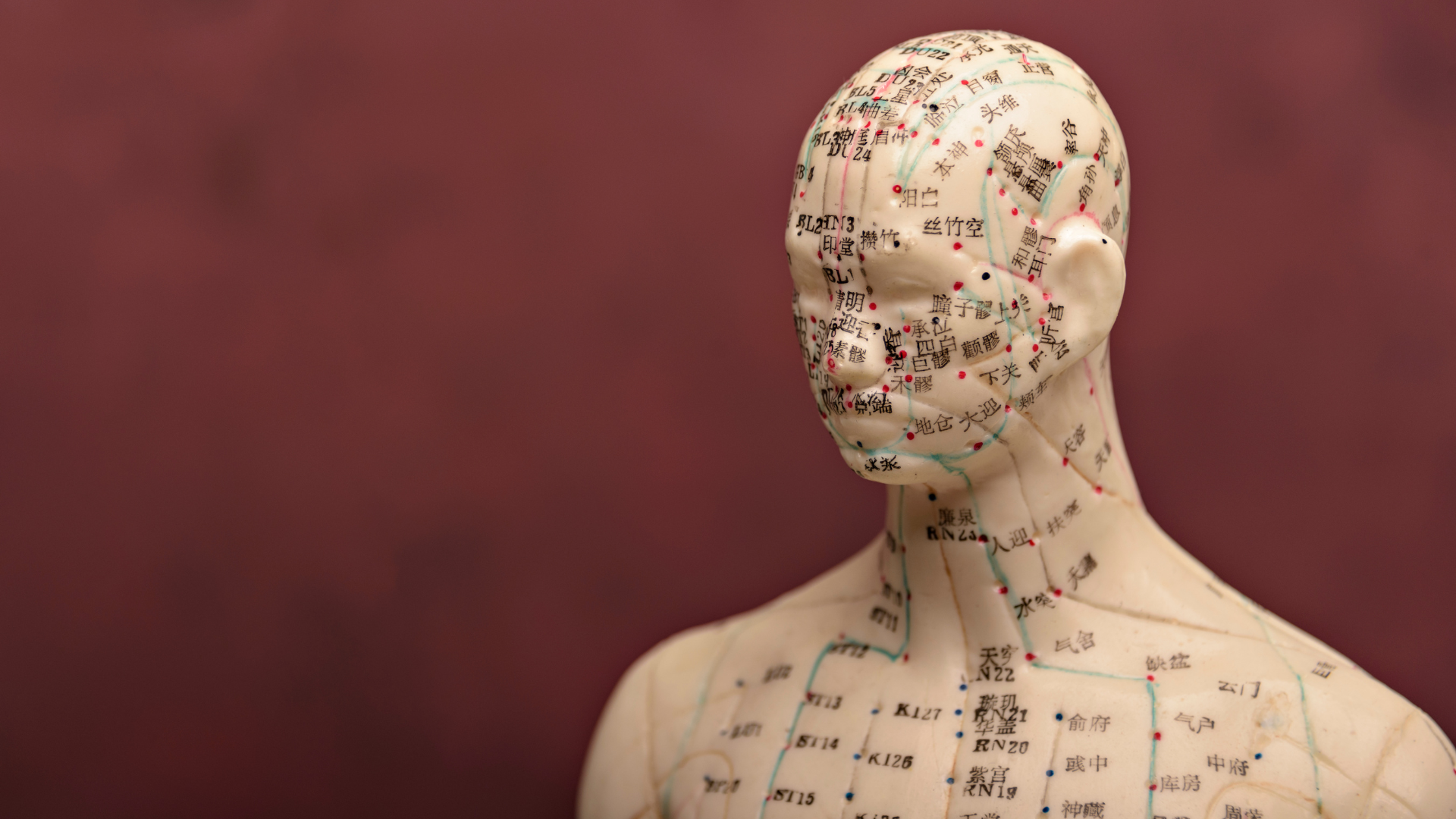
4. Meridians (Jing Luo)
Meridians (经络) are the pathways through which Qi flows. There are 12 primary meridians, each connected to a specific organ system, and numerous secondary meridians.
Key Principles:
- Network: Meridians form a network that connects the body’s organs, tissues, and systems.
- Acupuncture Points: There are over 360 acupuncture points along the meridians, each with specific functions.
In TCM Practice:
- Acupuncture and acupressure stimulate these points to regulate Qi flow and restore balance. For example, stimulating a point on the Lung meridian might help with respiratory issues.
How TCM Diagnoses and Treats Illness
TCM practitioners use a variety of diagnostic methods to assess imbalances, including:
- Observation: Examining the tongue, skin, and eyes.
- Listening/Smelling: Noting the sound of the voice and body odors.
- Questioning: Asking about symptoms, emotions, and lifestyle.
- Palpation: Feeling the pulse and abdomen.
Common TCM Treatments:
- Acupuncture 针灸 : Stimulates specific points to regulate Qi flow.
- Herbal Medicine 草药 : Uses plants, and sometimes animal products to restore balance.
- Cupping 拔罐 : Applies suction to the skin to improve circulation.
- Moxibustion 艾灸 : Burns dried mugwort near the skin to warm and invigorate Qi.
- Qigong/Tai Chi 气功/太极 : Combines movement, breathing, and meditation to cultivate Qi.
The Holistic Approach of TCM
TCM emphasizes the interconnectedness of the body, mind, and environment. It considers not only physical symptoms but also emotional, mental, and spiritual well-being. This holistic approach makes TCM particularly effective for chronic conditions, stress-related illnesses, and preventive care.
Conclusion
Traditional Chinese Medicine offers a unique and time-tested perspective on health and healing. By understanding the foundational principles of Yin-Yang, the Five Elements, Qi, and Meridians, you can appreciate how TCM seeks to restore balance and harmony within the body. Whether you’re exploring acupuncture, herbal remedies, or Qigong, TCM provides a wealth of tools to support your health and well-being.
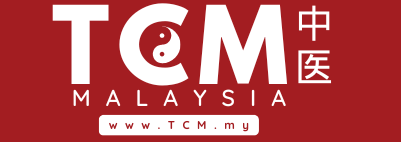
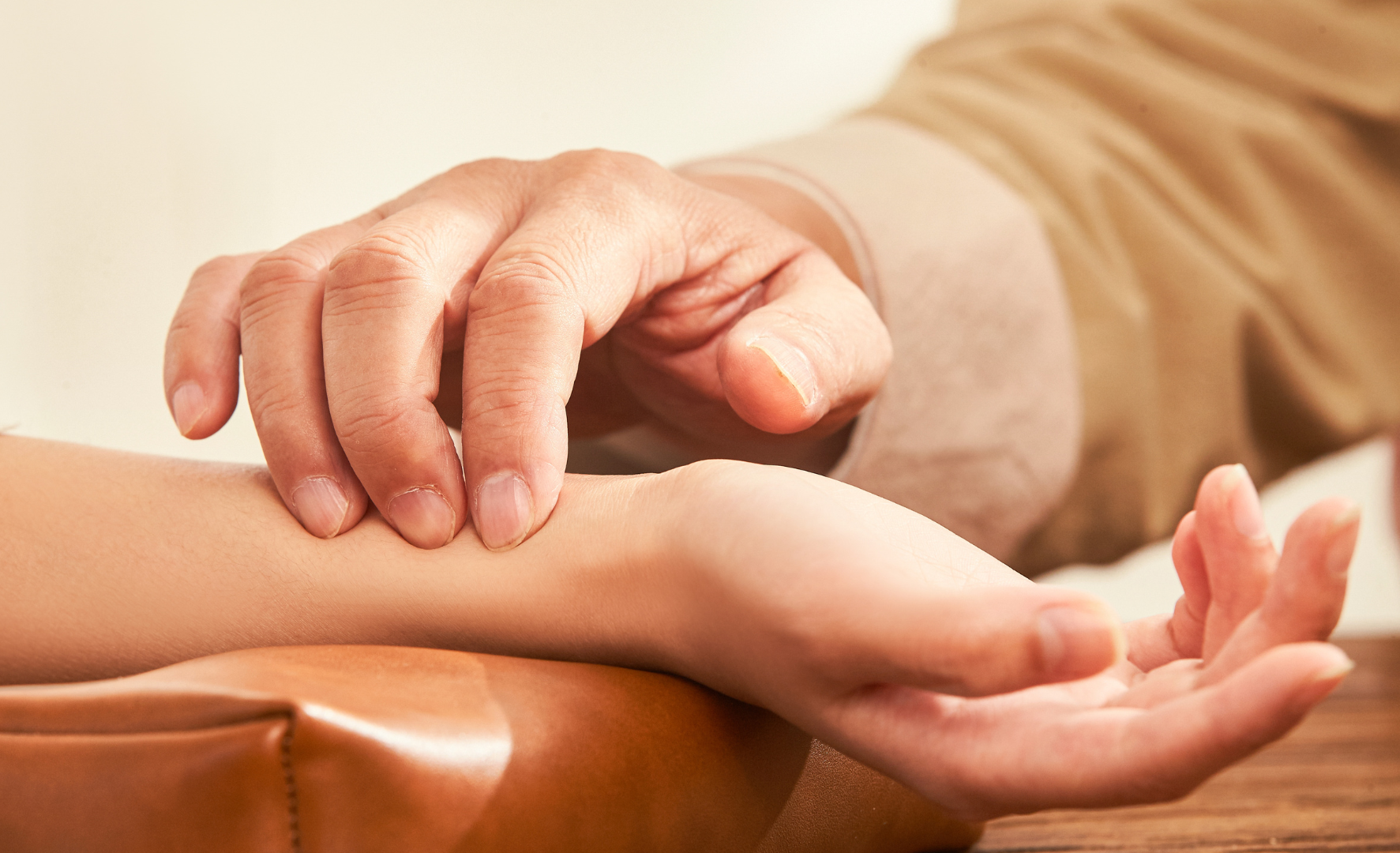
好文章!
谢谢